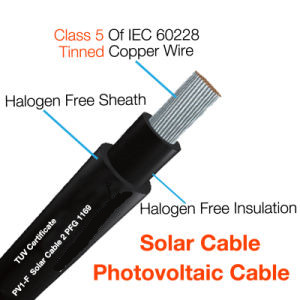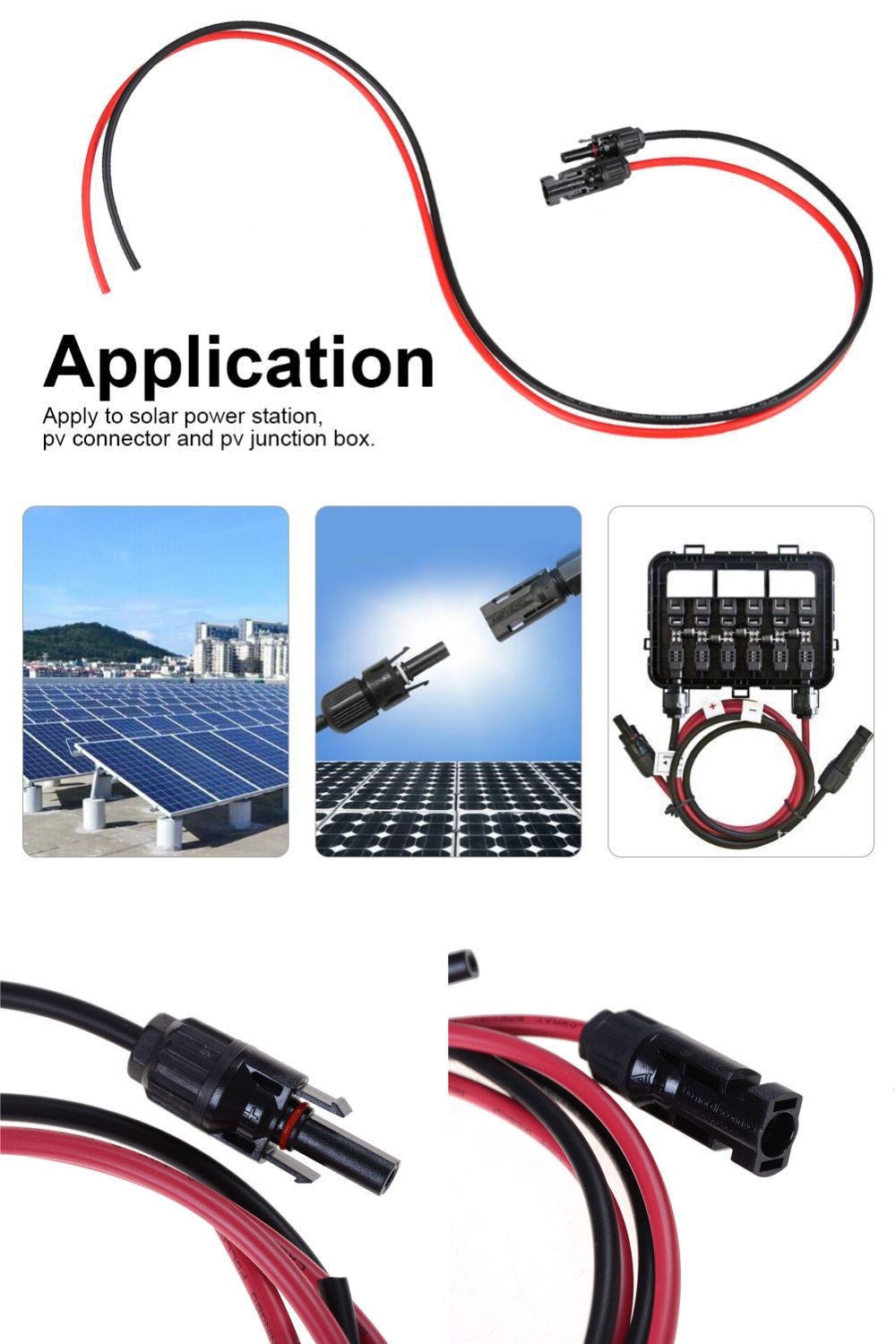For any solar project, you need a solar cable to string together the solar hardware. Most solar panel systems include basic cables, but sometimes you have to purchase the cables independently. This guide will cover the basics of solar cables while emphasizing the importance of these cables for any functional solar system.
The solar cable, sometimes known as a 'PV Wire' or 'PV Cable' is the most important cable of any PV solar system. The solar panels generate electricity which has to be transferred elsewhere - this is where solar cables come in. The biggest distinction in terms of size is between solar cable 4mm and solar cable 6mm. This guide will cover average prices for the cables and how to calculate what size you need for your solar setup.

To understand how solar cables function, we must get to the core functionality of the cable: The wire. Even though people assume cables and wires are the same things, these terms are completely different. Solar wires are single components, known as 'conductors'. Solar cables are groups of wires/conductors that are assembled together.
Essentially, when you purchase a solar cable you're purchasing a cable with numerous wires that were strung together in order to form the cable. Solar cables can have as little as 2 wires and as many as dozens of wires, depending on the size. They are fairly affordable and sold by the foot. The average solar cable price is $100 per 300 ft. spool.
How Do Solar Wires Work?
The solar wire is usually made from a conductive material that can transfer electricity such as copper. Copper is the most popular material for solar wires, and sometimes the wires are made of aluminum. Each solar wire is a single conductor that operates on its own. To increase the effectiveness of the cable system, multiple wires are assembled together.
The solar wire can either be solid (visible) or insulated by a so-called 'jacket' (protective layer which renders it invisible). In terms of wire types, there are single or solid wires. Both of these are used for solar applications. However, stranded wires are the most common because they are comprised of multiple tiny wire sets that are all twisted together to form the core of the wire. Smellier single wires are only available in small gauges.
Stranded wires are the most common wires for PV cables because they provide a higher degree of stability. This preserves the structural integrity of the wire when it comes to pressure from vibrations and other movements. For instance, if the birds shake up the cables or start chewing them on the rooftop where solar panels are located, you need the extra protection to ensure the electricity will keep flowing.
What Are PV Cables?
Solar cables are large cables that are comprised of multiple wires under a protective 'jacket'. Depending on the solar system, you're going to need a different cable. It’s possible to purchase a 4mm solar cable or a 6mm solar cable that will be thicker and provide transmission for higher voltage. There are also small differences in the PV cable types such as DC cables and AC cables.
How To Size Solar Cables: Introduction
The following is an introduction to correct sizing and terminology. To start with, the most common size for solar wires is "AWG" or 'American Wire Gauge'. If you have a low AWG, this means it covers a large cross-sectional area and hence has lower voltage drops. The solar panel manufacturer is going to supply you with charts that showcase how you can connect basic DC/AC circuits. You're going to need information that shows the maximum current allowed for the cross-sectional area of the solar system, the voltage drop, and DVI.
The size of solar panel cable used is important. The size of the cable can affect the performance of the entire solar system. If you purchase a smaller cable than recommended by your solar manufacturer, you could experience severe drops in voltage across the wires which eventually results in power loss. What's more, if you have undersized wires this can lead to a surge in energy that leads to a fire. If a fire erupts in areas such as the rooftop, it could quickly spread to the rest of the house.
How PV Cables Are Sized: AWG Meaning
To illustrate the importance of PV cable size, imagine the cable like hose carrying water. If you have a large diameter on the hose, the water will flow easily and won't put up any resistance. However, if you have a small hose then you will experience resistance as the water can't flow properly. The length also has an impact - if you have a short hose, the water flow will faster. If you have a large hose, you need the right pressure or the water flow will slow down. All electric wires function in the same manner. If you have a PV cable that is not large enough to support the solar panel, the resistance can result in fewer watts being transferred and blocking the circuit.
PV cables are sized using American Wire Gauges in order to estimate the gauge scale. If you have a wire with a lesser gauge number (AWG), you will have lesser resistance and the current flowing from the solar panels will arrive safely. Different PV cables have different gauge sizes, and this can affect the price of the cable. Each gauge size has its own AMP rating which is the maximum amount of AMPs that can travel through the cable safely.
Each cable can only accept a certain amount of amperage and voltage. By analyzing the wire charts, you should be able to determine what the right size is for your solar system (if this is not listed in the manual). You will need different wires to connect the solar panels to the main inverter, and then the inverter to the batteries, the batteries to the battery bank, and/or the inverter directly to the electric grid of the house. The following is a formula designed to help you make the calculations:
1) Estimate the VDI (Voltage Drop)
To calculate the VDI of the solar system, you're going to need the following information (supplied by your manufacturer):
· Total amperage (electricity).
· Length of the cable in one way (measured in feet).
· The voltage drop percentage.
Use this formula to estimate VDI:
· Amperage x Feet / % of voltage drop.
2) Determine size based on VDI
In order to calculate what size you need for each cable of the system, you need the VDI. The following chart will help you figure out the size you need for the application:
Voltage Drop Index Gauge
VDI GAUGE
1 = # 16
2 = # 14
3 = # 12
5 = # 10
8 = # 8
12 = # 6
20 = # 4
34 = # 2
49 = # 1/0
62 = # 2/0
78 = #3/0
99 =# 4/0
Example: If you have 10 AMPs, 100 feet of distance, a 24V panel, and a 2% loss you end up with a figure of 20.83. This means the cable you need is a 4 AWG cable.
There are two types of solar cables: AC cables and DC cables. DC cables are the most important cables because the electricity we harness from solar systems and use at home is DC electricity. Most solar systems come with DC cables that can be integrated with the adequate connectors. DC solar cables can also be purchased directly on ZW Cable. The most popular sizes for DC cables are 2.5mm, 4mm, and 6mm cables.
Depending on the size of the solar system and the electricity generated, you may need a larger or a smaller cable. The vast majority of solar systems in the US utilize a 4mm PV cable. To install these cables successfully, you have to connect the negative and positive cables from the strings in the main connector box supplied by the solar manufacturer. Virtually all DC cables are used in external locations such as the rooftop or other areas where the solar panels are laid out. To avoid accidents, positive and negative PV cables are separated.
There are only 2 core cables needed to connect a solar system. First, you need a red cable which is usually a positive cable to carry the electricity and a blue cable which is negative. These cables connect to the main generator box of the solar system and the solar inverter. Smaller single-wire cables can be effective for energy transmission as long as they are wrapped in insulation.
AC cables are also used in solar systems, but less frequently. Most AC cables are used to connect the main solar inverter to the electric grid of the home. Solar systems employ 5-core AC cables that have 3 wires for the phases carrying the current, 1 wire to keep the current away from the device, and 1 wire for grounding/safety which connects the solar casing and the ground.
Depending on the size of the solar system, it may only require 3-core cables. However, this is never uniform across the board because different states employ different regulations that have to be followed by the professionals installing the cables.